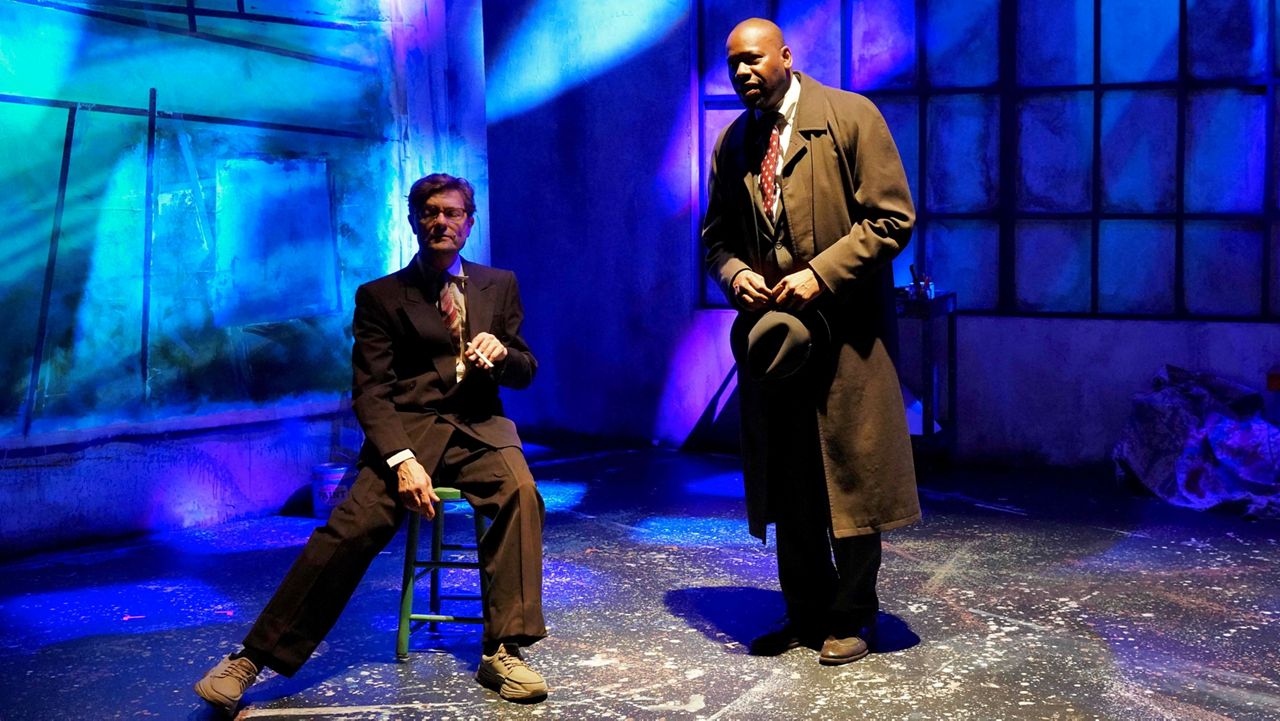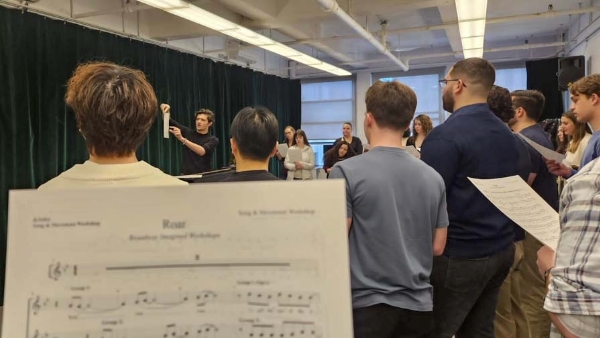Artwork
Ayanna Dozier
Portrait of Stanley Whitney in his studio. © Stanley Whitney. Picture by Pushpin Movies. Courtesy of Gagosian.
Stanley Whitney’s vibrant summary work use blocks of coloration as a strategy to construct rhythm and house on the canvas. The artist likens his portray strategy to name and response, the legendary musical kind used to sing hymns in Southern Black tradition. In such songs, a singer calls out to the viewers, beckoning them to chant again a phrase or lyric in response. By situating his painterly course of on this manner, as an prolonged interplay between himself and coloration, Whitney is ready to use Black tradition as some extent of departure for his vigorous abstractions.
Whitney’s new portray The Freedom We Battle For (2022) is the main target of a brand new Artsy Highlight Public sale, in partnership with Gagosian, to profit the Artwork for Justice Fund and Deliberate Parenthood of Higher New York. The hanging, 80-square-inch portray is rendered in Whitney’s signature color-block type, that includes hues of purple, yellow, inexperienced, orange, brown, black, and grey divided by horizontal strains of purple, blue, and teal. The work is emblematic of the modernist grid, although on the similar time, it deconstructs that historic kind by way of its immersive use of coloration.
The title The Freedom We Battle For, Whitney defined, “refers back to the time we’re residing in, a time when human rights are below assault on this nation.” In a brand new video, he describes the polarizing political panorama of right now as a “a vital time,” the place we discover ourselves “within the midst of a chilly conflict between the left and the appropriate.” He added, “If I can do one thing as an artist, I’m greater than keen to donate a portray.”
To that finish, Whitney selected Deliberate Parenthood of Higher New York for its work in offering reproductive well being care, like abortion, but in addition for its household planning providers. As well as, he selected the Artwork for Justice Fund to acknowledge the staggering variety of imprisoned folks in the US, which outranks every other nation. “They’re each implausible organizations that I’ve supported up to now, and the work they’re doing is vital presently,” Whitney famous. “I’m grateful to have the chance to help them with this public sale.”
Though he works with abstraction, Whitney finds methods to powerfully convey political and cultural arguments to his audiences. “I all the time title all of my work in order that for those who didn’t see the portray, you’d nonetheless have a way of who I’m and the place I come from,” he defined.
Born in Philadelphia in 1946, Whitney obtained his MFA from the Yale Faculty of Artwork in 1972. His signature color-block type, which he often refers to as his “mature type,” didn’t emerge till the early Nineties, whereas he was residing in Rome. It was presently that the collision of house and coloration got here to the fore of his work, impressed by interactions with Rome’s classical structure. Along with town’s structure, Whitney discovered inspiration within the work of Italian modernists like Giorgio Morandi and Black experimental jazz musicians like Charlie Parker, Miles Davis, and Ornette Coleman.
Stanley Whitney’s studio. © Stanley Whitney. Picture by Pushpin Movies. Courtesy of Gagosian.
The improvisational nature of jazz music shouldn’t be solely Whitney’s soundtrack whereas he works, it additionally displays his portray methodology. “I all the time begin on the high and paint down,” he mentioned of his course of. This strategy allows him to work with the colours and create a back-and-forth with the portray because it varieties, akin to an improvised solo somewhat than a fastidiously orchestrated efficiency. He has mentioned that the colour dictates the house and its placement on the canvas.
Whitney’s early grid work from the Eighties function delineated archways that appear to blow up, making a passageway. However over time, Whitney got here to the conclusion that he didn’t want to make use of strains to outline house; coloration alone greater than sufficed. “My use of coloration has all the time been intuitive,” he instructed Artsy. “It’s about what feels proper. Coloration has all the time been magic to me.”
Set up view, “Stanley Whitney: The Italian Work” at Palazzo Tiepolo Passi, Venice, Italy. April 23–November 27, 2022. © Stanley Whitney. Courtesy Lisson Gallery.
Whitney’s type, although rising within the Seventies and Eighties whereas the artwork world leaned into Conceptualism, was born from the portray traditions of the New York Faculty. He cites Mark Rothko, Jackson Pollock, and Joan Mitchell as his main reference factors. Nevertheless, the rigidness of these origins led Whitney to show to different genres, finally resulting in his now-iconic type. “There have been so many guidelines within the New York Faculty,” Whitney defined. “It actually formed me mentally as an artist. I discovered the significance of getting psychological toughness, a conviction within the work I’m making, from the New York Faculty.”
Whitney’s due recognition within the artwork world has solely arrived up to now decade, throughout which era he’s exhibited and gained illustration with main worldwide galleries (he was represented by Lisson Gallery starting in 2015, earlier than he joined Gagosian earlier this 12 months) and proven at establishments throughout the globe. That features his groundbreaking solo museum exhibitions “Focus: Stanley Whitney” (2016) and “Dance the Orange” (2015) on the Fashionable Artwork Museum of Fort Value and the Studio Museum in Harlem, respectively. This previous spring, Whitney had a mesmerizing exhibition on the Palazzo Tiepolo Passi in Venice in the course of the Biennale to commemorate the work that he has made in Italy throughout his profession. For the previous three a long time, the artist has cut up his time between New York and Parma, Italy.
Portrait of Stanley Whitney in his studio. © Stanley Whitney. Picture by Pushpin Movies. Courtesy of Gagosian.
Lately, Whitney’s secondary market has grown exponentially. In November 2021, Whitney’s public sale document was set when the canvas Ahead to Black (1996), measuring over seven ft in size, offered for greater than $2.3 million, far exceeding its estimate of $150,000–$200,000 at Sotheby’s. That document was almost matched in March of this 12 months, when Nightwatch (2012) offered for £1.7 million ($2.3 million) at Sotheby’s “The Now” night public sale. In reality, the artist’s high 10 outcomes at public sale all occured over the previous 12 months, 9 of which surpassed the million greenback mark.
As new audiences are uncovered to Whitney’s contemporary strategy to abstraction, they’re confronted with the foundational use of tradition—from jazz to the Roman archways—throughout his follow. His charitable work, as seen on this newest public sale and his 2020 on-line exhibition “No to Prisons,” through which proceeds additionally went towards the Artwork for Justice Fund, equally perform like a name and response. As Whitney himself mentioned, abstraction has a political affect as a result of it “[puts] every little thing into query.”
Ayanna Dozier
Ayanna Dozier is Artsy’s Workers Author.



